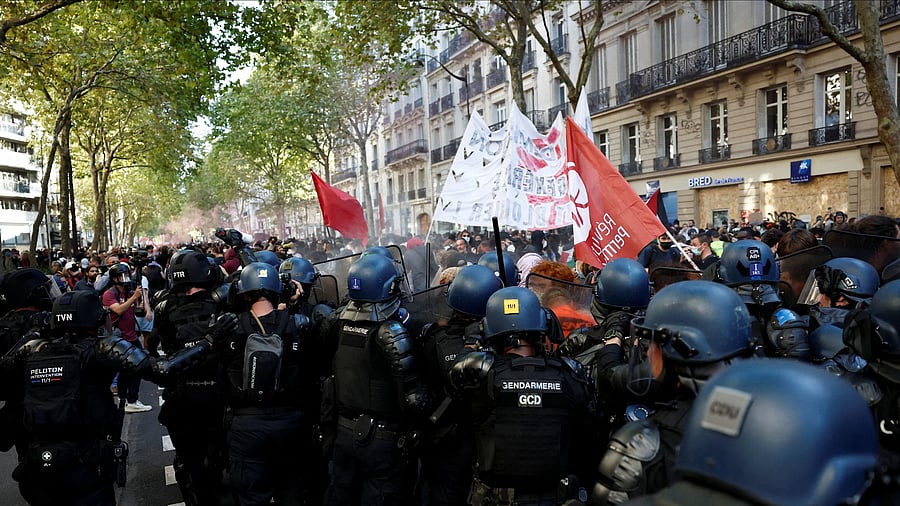
French gendarmes face with protesters during clashes at a demonstration in Paris as part of a day of nationwide strikes and protests against the government and cuts in the next budget, with supporters of the "Bloquons Tout" (Let's Block Everything) movement, France, September 18, 2025.
Credit: Reuters photo
On 2 October 2025, France witnessed a powerful resurgence of working-class resistance as tens of thousands of workers, students, and pensioners took to the streets in a united front against the government’s proposed austerity measures. Organised by trade unions, including the General Confederation of Labour (CGT) and the French Democratic Confederation of Labour (CFDT), the protests were a direct response to the government’s plans to implement deep spending cuts in the forthcoming national budget.
The Roots of Discontent
The immediate catalyst for these protests was the government’s proposal to cut €44 billion ($52 billion) from public spending, targeting local authorities, healthcare, and education. These cuts were viewed as a direct attack on the public sector and the services that millions of working-class citizens rely on daily. Furthermore, the government’s decision to raise the retirement age from 62 to 64 was perceived as a betrayal of workers who had fought long and hard for their rights.
In response, unions have demanded a reversal of the pension reform, increased funding for public services, and higher taxes on the wealthy. They have labelled the government’s austerity measures as unjust and harmful to the working class.
Despite the government’s attempts to downplay the significance of the protests, the scale of the 2 October strikes was undeniable. The Interior Ministry reported approximately 195,000 participants nationwide, including 24,000 in Paris. However, union estimates placed the number closer to 600,000, with some reports suggesting up to one million participants. The protests spanned over 200 towns and cities, with demonstrations in major urban centres and smaller communities alike.
The strikes affected a variety of sectors, including transport, education, and healthcare, highlighting the widespread discontent among workers. In Paris, iconic landmarks such as the Eiffel Tower were closed in solidarity with the protests.
Government Response
Prime Minister Sébastien Lecornu, who was appointed in September following the resignation of François Bayrou, has faced significant challenges in implementing the government’s austerity agenda. Lecornu, an ally of Macron, has yet to form a new government and has ruled out key Socialist demands, including a 2% wealth tax on the wealthiest 0.01% and the reversal of the pension reform. Instead, he has promised improved pension provisions for women, a concession that unions argue does not go far enough.
The government’s stance has been met with widespread opposition. Union leaders have rejected any repeat of Bayrou’s proposed cuts, demanding “fiscal justice” and a fairer distribution of the burden across society. Sophie Binet, head of the CGT, emphasised that “half-measures won’t solve the problem,” and vowed to continue pushing back against policies that target workers.
The October 2 strikes were not an isolated event but part of a broader movement that has been building for years. In September 2025, the “Bloquons-Tout” (Block Everything) movement gained momentum, with protesters organising blockades and disruptions across the country. This grassroots movement, largely organised through social media, has been instrumental in mobilising workers and students to take direct action against the government’s policies.
